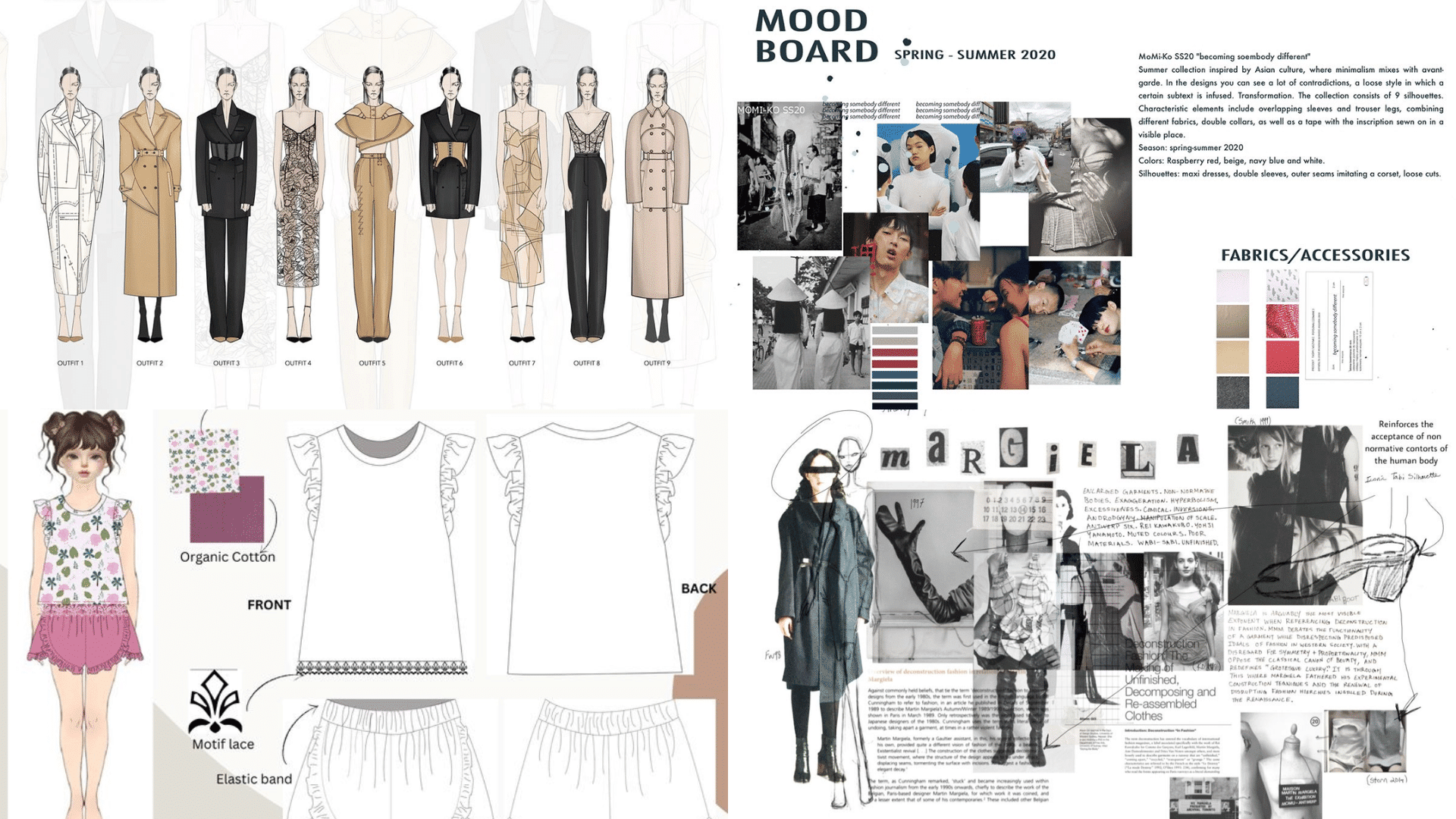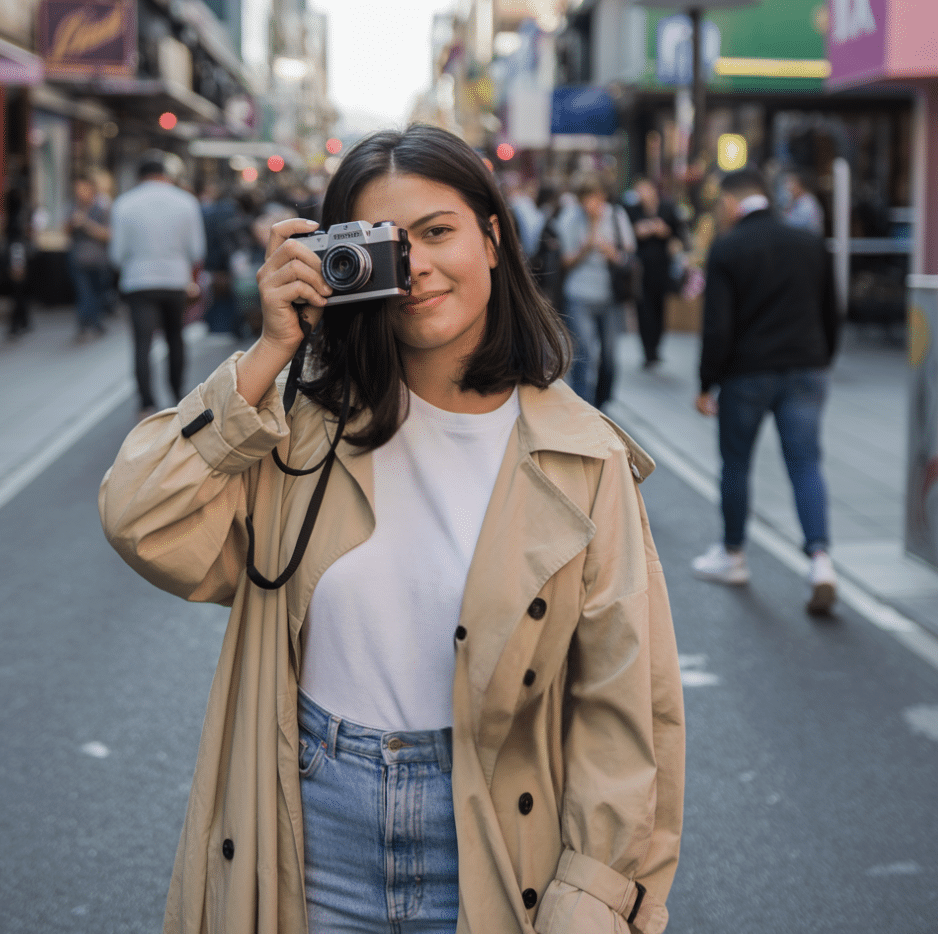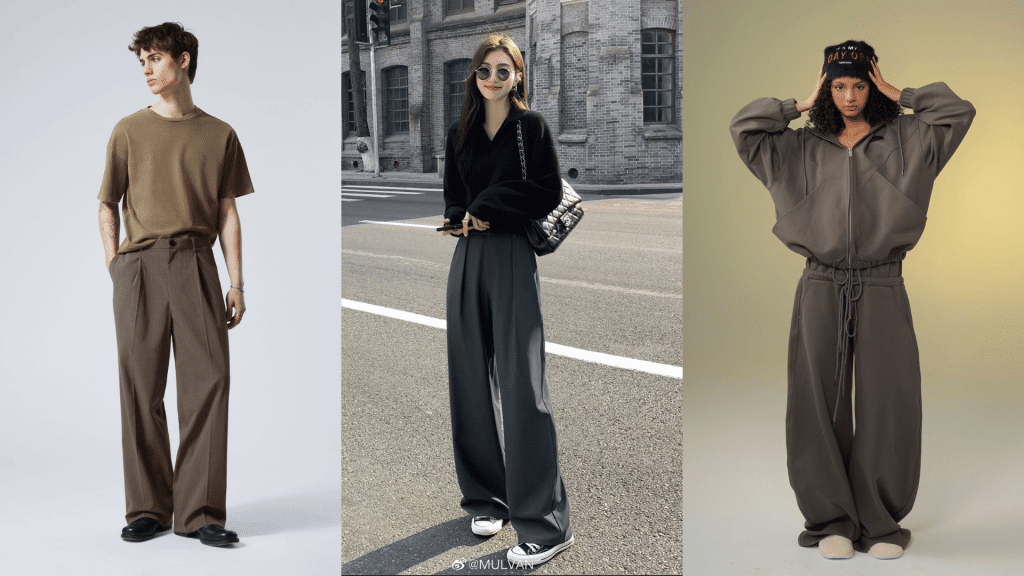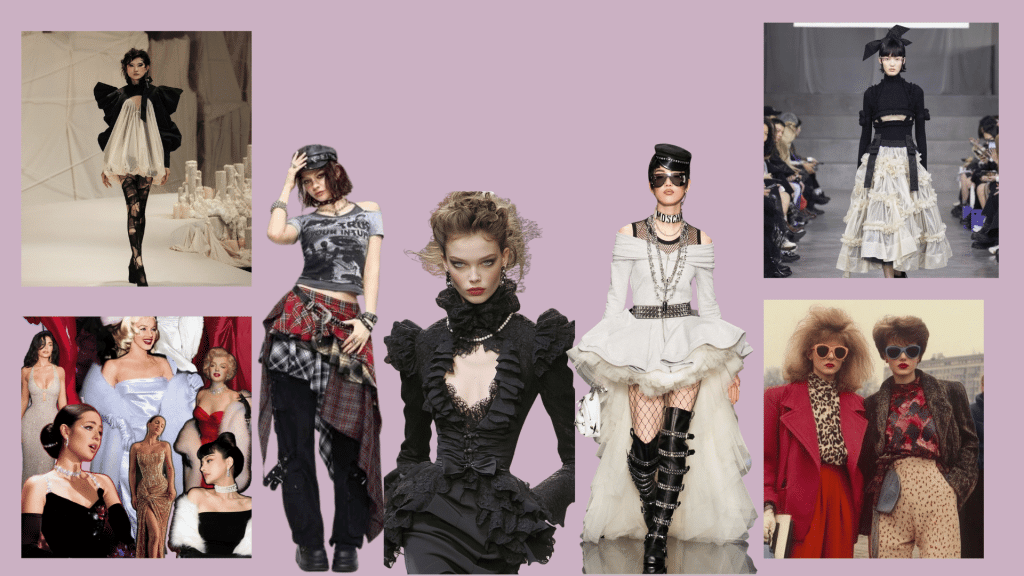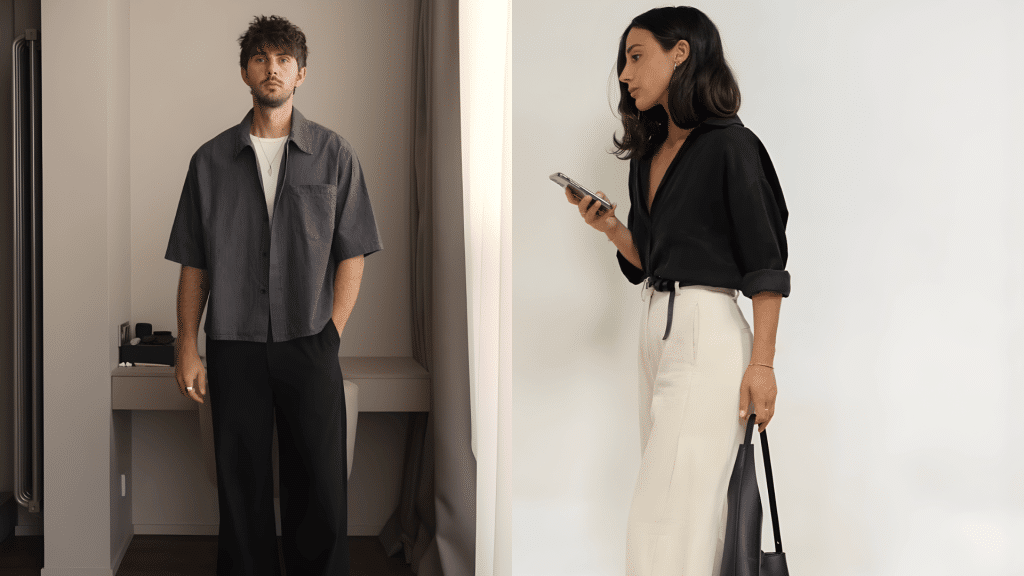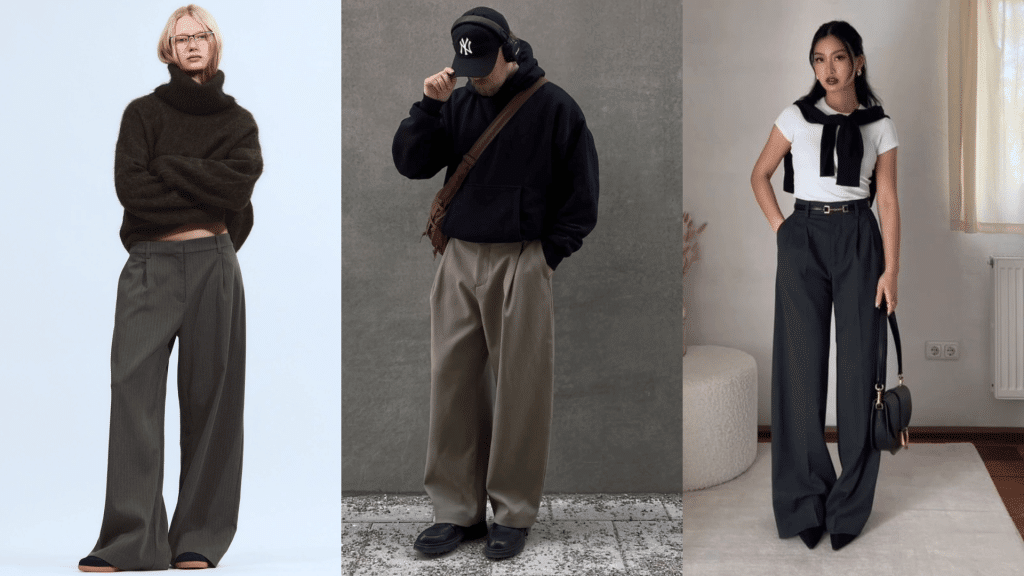Creating a standout fashion portfolio requires seeing what works in the industry.
Fashion design portfolio examples provide the visual inspiration and structural steps needed to build a compelling presentation of creative work.
The best portfolios tell a clear story through carefully curated pieces that highlight the designer’s style and expertise.
These proven approaches help change scattered creative work into polished, professional presentations that capture attention and open career opportunities.
What Makes A Successful Fashion Design Portfolio?
Good fashion design portfolios share specific characteristics that make them memorable and effective.
Professional portfolios follow logical flow patterns with consistent spacing, typography, and color schemes that clearly separate technical drawings from finished garments.
Sharp, well-lit images with consistent lighting and neutral backgrounds accurately showcase fabric textures and construction details.
Technical drawing proficiency appears through clean, flat sketches and detailed construction drawings, while variety in techniques from draping to pattern-making proves versatility.
Cohesive visual identity runs through exceptional portfolios without repetition, maintaining consistent quality standards that prove designer reliability.
Practical Tools and Formats for Aspiring Designers
Choosing the right tools and formats makes building a portfolio much easier. From digital software to presentation, these resources for fashion design portfolio examples help designers create professional and polished pieces.
| CATEGORY | EXAMPLES AND PLATFORMS | WHY IT’S USEFUL |
|---|---|---|
| Digital Tools | Adobe Illustrator, Photoshop, Procreate, CLO3D | Helps create sketches, digital flats, textile prints, and 3D garment simulations. |
| Portfolio Builders | Wix, Format, Squarespace, Behance | Easy to build professional digital portfolios with templates and customization. |
| Presentation Formats | PDF portfolios, printed binders, interactive websites | Allows flexibility—PDFs for emails, printed versions for reviews, websites for wider reach. |
| Photography Resources | DSLR cameras, smartphone photography, and basic editing apps | High-quality images elevate the portfolio and make designs stand out. |
| Organization Tools | Canva, InDesign, Google Drive | Helps structure layouts, manage files, and keep projects organized. |
| Learning Resources | YouTube tutorials, Skillshare, LinkedIn Learning | Provides affordable training to improve technical and creative presentation. |
How Long Should a Portfolio Be?
A fashion design portfolio should typically contain 10-15 projects or 15-20 pages maximum. Quality matters more than quantity when presenting work to potential employers or clients.
Digital portfolios work best with 8-12 strong projects that can be viewed quickly online. Print portfolios can extend to 20 pages, but should remain focused and concise.
Successful portfolios showcase range and expertise through carefully curated pieces that tell a cohesive story about the designer’s capabilities and aesthetic vision.
Include only your absolute best work that directly supports your career goals and target audience expectations.
Fashion Design Portfolio Examples
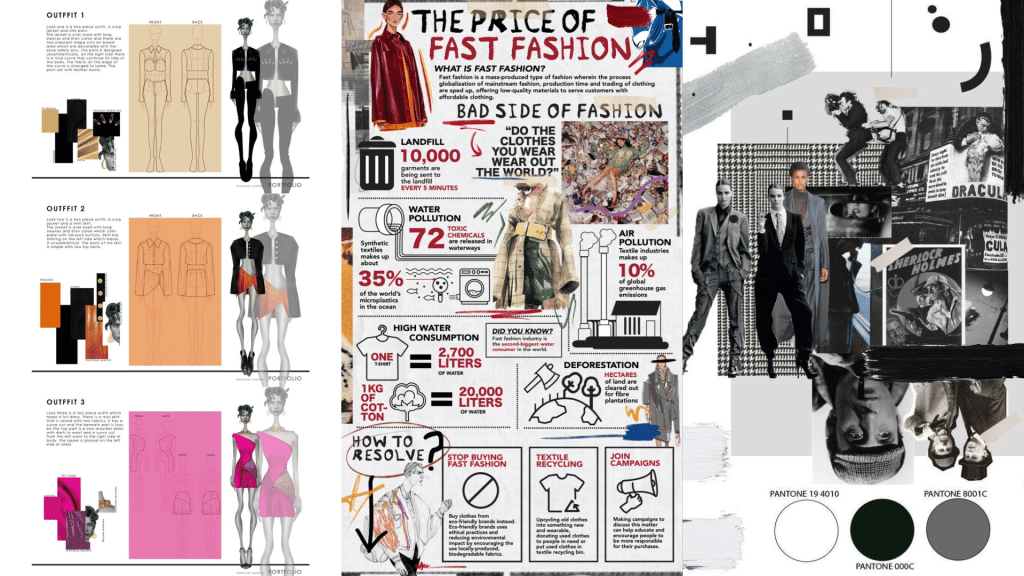
Looking at real examples is one of the best ways to learn what works in fashion design. They show how designers highlight their strengths, inspire new ideas, and guide aspiring designers in structuring their own portfolios.
1. Concept-to-Runway Portfolio
This type showcases the entire process from early sketches to final runway garments. It gives schools, clients, or recruiters a full picture of creativity, technical skill, and presentation ability.
- Concept Development: Inspiration boards and sketch work leading into collection planning.
- Target Market: Aimed at fashion houses, runway audiences, and luxury clients who value bold storytelling.
- Color Palette & Textures: Cohesive shades and surfaces that unify the entire collection.
2. Minimalist Digital Portfolio
Clean layouts and image-driven spreads give this type a polished, modern appeal. It keeps the focus entirely on the visuals while using minimal text for clarity.
- Concept Development: Simple visuals that highlight design ideas.
- Target Market: Ideal for online recruiters, design schools, or modern brands that prefer clean layouts.
- Color Palette & Textures: Neutral tones and subtle surfaces to reinforce the minimalist theme.
3. Student Project Portfolio
Often made from coursework or practice briefs, this portfolio highlights experimentation and growth. It reflects learning potential and adaptability, making it an ideal fit for entry-level opportunities.
- Concept Development: Mood boards and explanations of class projects.
- Target Market: Built for admissions panels, internships, and entry-level opportunities in fashion.
- Color Palette & Textures: Playful color use and mixed textures to reflect exploration.
4. Sustainable Fashion Portfolio
This type strikes a balance between style and responsibility by featuring eco-conscious designs. It appeals to an audience that values innovation and environmental awareness.
- Concept Development: Boards inspired by sustainability and ethics.
- Target Market: Appeals to eco-conscious brands, ethical fashion labels, and socially responsible clients.
- Color Palette & Textures: Earthy shades and natural finishes to emphasize eco values.
5. Accessories-Focused Portfolio
Dedicated to footwear, handbags, or jewelry, this portfolio shows skill in a specialized area. It emphasizes precision, detailing, and niche creativity.
- Concept Development: Sketches and prototypes of accessories in context.
- Target Market: Perfect for accessory brands, footwear companies, or jewelry houses seeking specialists.
- Color Palette & Textures: Bold accents and surfaces to make accessory designs better.
6. Textile and Print Design Portfolio
Perfect for designers specializing in fabric, this type highlights good textiles and surface treatments. It shows how fabric itself can drive design.
- Concept Development: Print sketches, motifs, and design experiments.
- Target Market: Targets textile companies, fabric manufacturers, and design studios focused on prints
- Color Palette & Textures: Bold palettes and layered surfaces for maximum impact.
7. Menswear Portfolio
Designed for practicality and style, this portfolio often includes tailoring, casual wear, and streetwear. It shows versatility and awareness of men’s markets.
- Concept Development: Inspirations rooted in lifestyle and cultural references.
- Target Market: Suited for menswear brands, or casualwear labels focusing on male consumers.
- Color Palette & Textures: Neutral shades with structured finishes for function and style.
8. Eveningwear / Couture Portfolio
A luxury-focused portfolio featuring gowns, details, and craftsmanship. It often uses close-up visuals to highlight fabric work and embellishment.
- Concept Development: Inspirations from art, architecture, and luxury culture.
- Target Market: Designed for luxury houses, bridalwear clients, and red-carpet styling opportunities.
- Color Palette & Textures: Deep hues and rich surfaces for dramatic effect.
9. Athleisure and Sportswear Portfolio
Blends function and fashion, featuring activewear designs suited for modern lifestyles. It shows performance, comfort, and style together.
- Concept Development: Mood boards based on movement and energy.
- Target Market: Aimed at activewear companies, lifestyle brands, and sportswear retailers.
- Color Palette & Textures: Sleek colors and smooth textures to match function.
10. Children’s Wear Portfolio
Playful and practical, this type highlights designs made with comfort and safety in mind. It appeals to brands working in kidswear.
- Concept Development: Fun, story-based boards and sketch work.
- Target Market: Built for children’s apparel companies, family brands, or retailers specializing in kidswear.
- Color Palette & Textures: Bright tones and soft surfaces to fit children’s needs.
11. Hand Illustration Portfolio
This portfolio showcases artistry through a range of drawings and painted designs. It shows creativity while still connecting to garment outcomes.
- Concept Development: Hand-drawn inspiration sketches and concepts.
- Target Market: Appeals to design schools, editorial publishers, and brands valuing artistic storytelling.
- Color Palette & Textures: Rich shading and expressive colors in drawings.
12. Digital Fashion Portfolio
Using 3D software, this portfolio presents photorealistic garments and digital runways. It shows technical ability and modern presentation skills.
- Concept Development: Digital sketches and 3D prototypes.
- Target Market: Perfect for tech-driven brands, virtual fashion, and companies interested in metaverse fashion.
- Color Palette & Textures: Realistic palettes with digital surface effects.
13. Styling & Editorial Portfolio
Curated shoots and lookbooks form the core of this type. It shows the designer’s ability to create fashion stories and style garments well.
- Concept Development: Thematic boards guiding editorial direction.
- Target Market: Targets fashion magazines, styling agencies, and creative directors in editorial and advertising.
- Color Palette & Textures: Cohesive tones and finishes across styled visuals.
14. Capsule Collection Portfolio
A smaller collection designed to be cohesive, versatile, and commercial. It’s an effective way to show thoughtfulness and focus.
- Concept Development: Boards built on simplicity and versatility.
- Target Market: Appeals to commercial brands, retailers, and buyers looking for versatile collections.
- Color Palette & Textures: Cohesive shades and textures to unify the capsule.
15. Cultural Heritage Portfolio
This type blends cultural inspiration with modern design. It highlights heritage while adapting it for contemporary audiences.
- Concept Development: Boards inspired by traditions and cultural stories.
- Target Market: Built for cultural fashion houses, artisan brands, or clients seeking heritage-inspired design.
- Color Palette & Textures: Heritage tones and handcrafted finishes adapted into modern wear.
These examples give the basic understanding of portfolios and are very helpful for designers in their future.
Benefits of Having an Online Fashion Portfolio
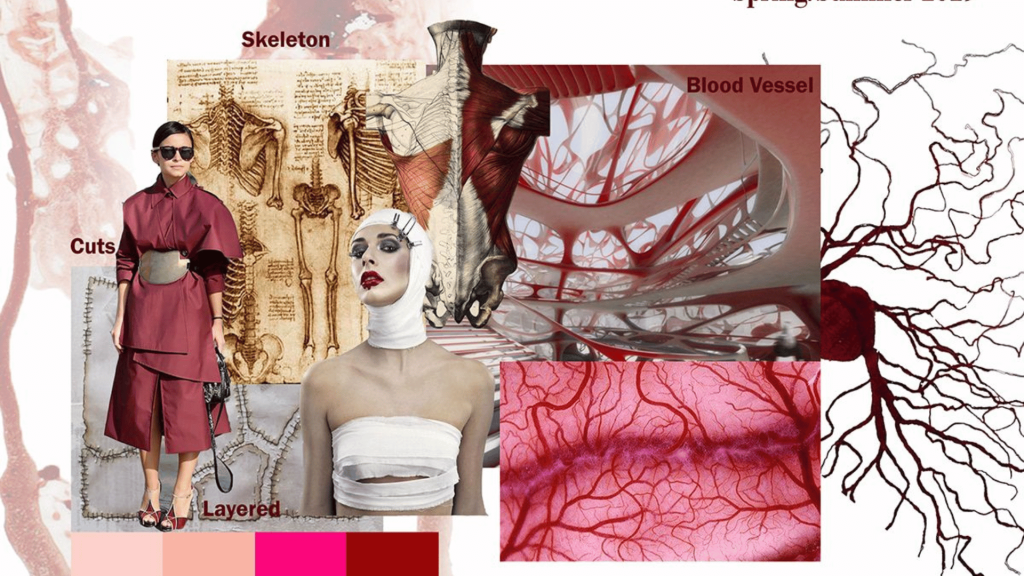
An online fashion portfolio lets designers showcase creativity and skills globally, easy to update, customize, and share.
1. Accessibility
Unlike print versions, digital fashion portfolio examples are easy to update, share, and customize, offering unparalleled flexibility in presentation.
They allow recruiters, brands, fashion houses, and design schools to view collections anytime from anywhere in the world, making opportunities more accessible than ever before.
2. Professional Differentiation
A well-structured portfolio highlights creativity, technical skills, and individuality, helping designers stand out in an increasingly competitive industry.
The digital format allows for multimedia integration, enabling designers to include process videos, sketches, fabric details, and runway footage.
3. Cost-Effective and Sustainable
Online portfolios remove printing costs and shipping expenses associated with physical portfolios.
For example, in the fashion design portfolio examples in this blog, designers can update their collections instantly without reprinting materials, making it an environmentally conscious choice.
4. New Networking Opportunities
Digital portfolios can be easily shared across social media platforms, professional networks, and email communications.
This seamless sharing capability increases visibility and creates networking opportunities that might not exist with traditional portfolio formats.
5. Real-Time Analytics and Feedback
Many online portfolio platforms provide analytics showing which pieces generate the most interest, how long visitors spend viewing specific projects, and demographic information about portfolio viewers.
This valuable data helps designers understand market preferences and refine their presentation strategies.
How to Build a Portfolio If You’re Starting Out?
Starting a fashion portfolio from scratch can feel overwhelming, but it’s about progress, not perfection. A strong portfolio needs a few polished examples that highlight creativity and skill. Here are some tips to get started:
- Start Small: Choose 3–5 of your best projects instead of trying to show everything at once.
- Create Hypothetical Briefs: If you don’t have client work yet, make sample projects around themes, trends, or imaginary brands.
- Show the Process: Include mood boards, sketches, and development stages to prove how ideas grow.
- Mix Skills: Balance creative sketches with technical flats, textile work, or construction details.
- Use What You Have: Style and photograph garments you’ve already made, or rework existing pieces into fresh designs.
- Go Digital First: Build a simple online portfolio using platforms like Behance, Wix, or Format. It’s affordable and easy to update.
- Keep updating: A portfolio is a living project. Refresh it regularly as your skills improve and new work comes in.
Get Started with Your Portfolio
Fashion design portfolio examples reveal the key elements that separate professional presentations from amateur attempts.
High-quality photography, strategic content curation, and clear visual hierarchy make portfolios memorable. Successful designers use technical skills and personal branding to craft compelling narratives, as shown in featured examples.
Ready to change your sketches and designs into a portfolio that opens doors?
Start building your professional fashion design portfolio today and take the first step toward your dream career in fashion.

